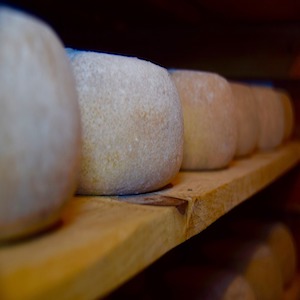Use of commercial protective cultures in portioned sheep milk cheeses to control Listeria monocytogenes

Accepted: 29 October 2022
HTML: 24
All claims expressed in this article are solely those of the authors and do not necessarily represent those of their affiliated organizations, or those of the publisher, the editors and the reviewers. Any product that may be evaluated in this article or claim that may be made by its manufacturer is not guaranteed or endorsed by the publisher.
Authors
The main objective of this study was to innovate soft and semi-cooked sheep milk cheese production processes with the use of a commercial protective culture able to control Listeria monocytogenes growth. A freeze-dried commercial culture of Lactobacillus plantarum was tested in DS cheese and PS cheese, two types of pasteurized sheep milk, raw-paste cheeses aged for no less than 20 and 30 days respectively. In the first step, in vitro tests were conducted to identify the most suitable matrix for the growth of L. plantarum in order to create a subculture that could be used at industrial cheese-making plants. During the second phase of the study, L. plantarum culture was introduced in the manufacturing process of the cheeses in a production plant. Finally, a challenge test was conducted on portioned DS and PS cheeses in order to evaluate the activity of the protective culture against L. monocytogenes: the cheeses were portioned, experimentally contaminated with L. monocytogenes strains, vacuum packed and stored at +4°C (correct storage conditions) and at +10°C (thermal abuse). Cheeses were analysed at the end of the shelf-life to evaluate the presence and growth of L. monocytogenes, to enumerate lactic acid bacteria and determine chemical-physical features. The results confirmed that protective cultures are a useful technological innovation to control L. monocytogenes growth during cheese storage without altering composition, microflora and chemical-physical characteristics of the product. However, the use of protective cultures should be applied as an integration of risk control measures and not as a substitute for preventive actions.
Supporting Agencies
FAR 2019 ScaranoHow to Cite

This work is licensed under a Creative Commons Attribution-NonCommercial 4.0 International License.
PAGEPress has chosen to apply the Creative Commons Attribution NonCommercial 4.0 International License (CC BY-NC 4.0) to all manuscripts to be published.

 https://doi.org/10.4081/ijfs.2023.10484
https://doi.org/10.4081/ijfs.2023.10484



